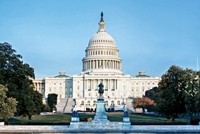Advertisement
Grab your lab coat. Let's get started
Welcome!
Welcome!
Create an account below to get 6 C&EN articles per month, receive newsletters and more - all free.
It seems this is your first time logging in online. Please enter the following information to continue.
As an ACS member you automatically get access to this site. All we need is few more details to create your reading experience.
Not you? Sign in with a different account.
Not you? Sign in with a different account.
ERROR 1
ERROR 1
ERROR 2
ERROR 2
ERROR 2
ERROR 2
ERROR 2
Password and Confirm password must match.
If you have an ACS member number, please enter it here so we can link this account to your membership. (optional)
ERROR 2
ACS values your privacy. By submitting your information, you are gaining access to C&EN and subscribing to our weekly newsletter. We use the information you provide to make your reading experience better, and we will never sell your data to third party members.
Policy
President’s Immigration Plan Provides Some Changes For Science And Technology Workers
Obama’s order would not increase the number of heavily sought H-1B visas for high-tech workers
by Andrea Widener
December 1, 2014
| A version of this story appeared in
Volume 92, Issue 48
President Barack Obama’s recent executive action to change the nation’s immigration system includes some supports for science and technology workers. But it does not expand the number of H-1B visas available to bring high-tech workers into the U.S., which is a priority for many science and technology companies.
In recent years, demand has been so high that the supply of H-1B visas was exhausted within days of the application period opening. The President’s action “may be well intended, but executive action is not the long-term solution” to the immigration problem, says Elizabeth Hyman, executive vice president of the advocacy group TechAmerica.
Obama’s move provides some support for immigrant scientists. For example, immigrant workers who have applied for permanent residency would be allowed to change jobs, and their spouses would be permitted to work.
Also, university science majors from abroad could work in jobs related to their studies both while they are students and after graduation. Explaining this change, Obama says, “We educate the world’s young people in our universities, and then we just send them home.”
The President’s move provoked congressional Republicans and may undermine the chances of lawmakers quickly passing a 2015 funding bill for the federal government. Congress returned to work on Dec. 1, leaving it just 10 days to avoid a government shutdown by passing an overarching funding bill or a short-term continuing resolution.




Join the conversation
Contact the reporter
Submit a Letter to the Editor for publication
Engage with us on Twitter